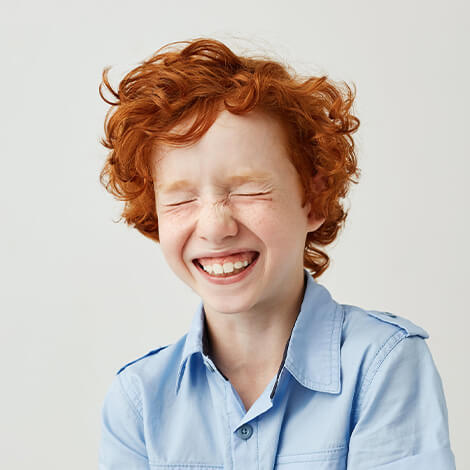Sedation Options
Conscious Sedation
Imagine your child undergoing a complex dental treatment like a root canal, extraction, or oral surgery. When treatment is complete, your child will have no recollection of the time it took, the pain, the noise, or the discomfort. We are pleased to offer your child the option of comfortable, safe, and effective sedation dentistry. Our pediatric dental patients who benefit from sedation dentistry have:
- A fear or anxiety of being at the dentist
- A hard time sitting still for long periods of time
- A hard time getting (and staying) numb from anesthetics
What is sedation dentistry?
Sedation dentistry allows your pediatric dentist to provide a variety of dental treatments safely and comfortably for children who experience anxiety when visiting the dentist. There are several benefits to sedation dentistry, including:
- No memory of undergoing the procedure
- No sense of time while under sedation
- No sense of smell or sound
- No fear or anxiety during treatment
Levels of Sedation
Sedation dentistry is closely regulated by law, and there are three sedative states at which your child’s dentist can administer treatment: mild sedation, moderate sedation, and deep sedation.
- Mild Sedation — Anxiolysis is the lightest form of sedation dentistry and is often used for children with mild anxiety, longer procedures, or more complex situations. Mild sedation is usually administered orally. Your child will remain awake or very sleepy throughout the entire procedure and will be able to breathe normally, but he or she will feel a great sense of relaxation. Patients typically recover from anxiolysis sedation within a few hours after the procedure is complete. Nitrous oxide inhalation (laughing gas) is another form of mild to moderate sedation that results in relaxation during treatment.
- Moderate Sedation — Used for patients with moderate dental anxiety and for patients who need longer or more complex procedures, conscious sedation often refers to the use of oral sedation. With conscious sedation, your child will remain awake throughout the procedure but will be in a moderate state of relaxation.
How are sedatives administered?
- Inhalation — Nitrous oxide, or laughing gas, is the most frequently used method for easing mild to moderate anxiety. Recovery is quick so your child can resume normal activities immediately.
- Oral — An extremely common technique for dental sedation is oral sedation. It is easy and does not require the use of needles. Your child will be given a prescription pill which, taken about an hour before the appointment, will have your child fully relaxed by the time you arrive at our office.
General Anaesthesia
For those children who require extensive dental work and who cannot cooperate in the office setting, general anaesthesia presents an option to have treatment done in one sitting.
We perform all GA procedures at Anesthesia for Dentistry.
.jpeg)
Established in 2003, AFD has treated thousands of patients who required anesthetic services in order to access their oral health care needs. This three surgical suite facility provides over 1800 general anesthetics a year to children, adult and pateints with special needs who require dental work asleep. They provide the most number of general anesthesia for dentistry in BC.
Our doctors and staff at Just4Kids will work together with AFD to deliver all necessary treatment required on your child while he/she is sleeping.
If your child requires treatment under GA, you will be given a detailed packet explaining all the pertinent information.
Please contact our Surrey dental office to schedule a consultation, learn more about sedation dentistry, and find out which sedation dentistry method may be right for your child.


